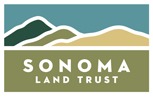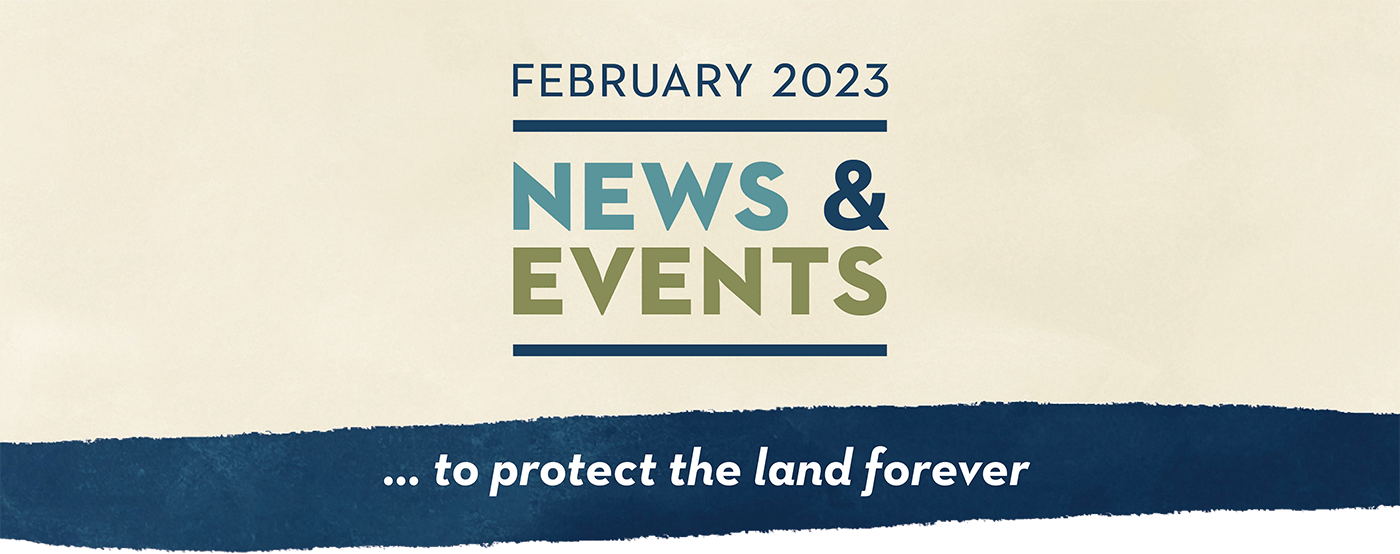
Returning Good Fire to the Landscape
A traditional land management practice that was suppressed for decades is regaining prominence in Sonoma County – and for good reason!
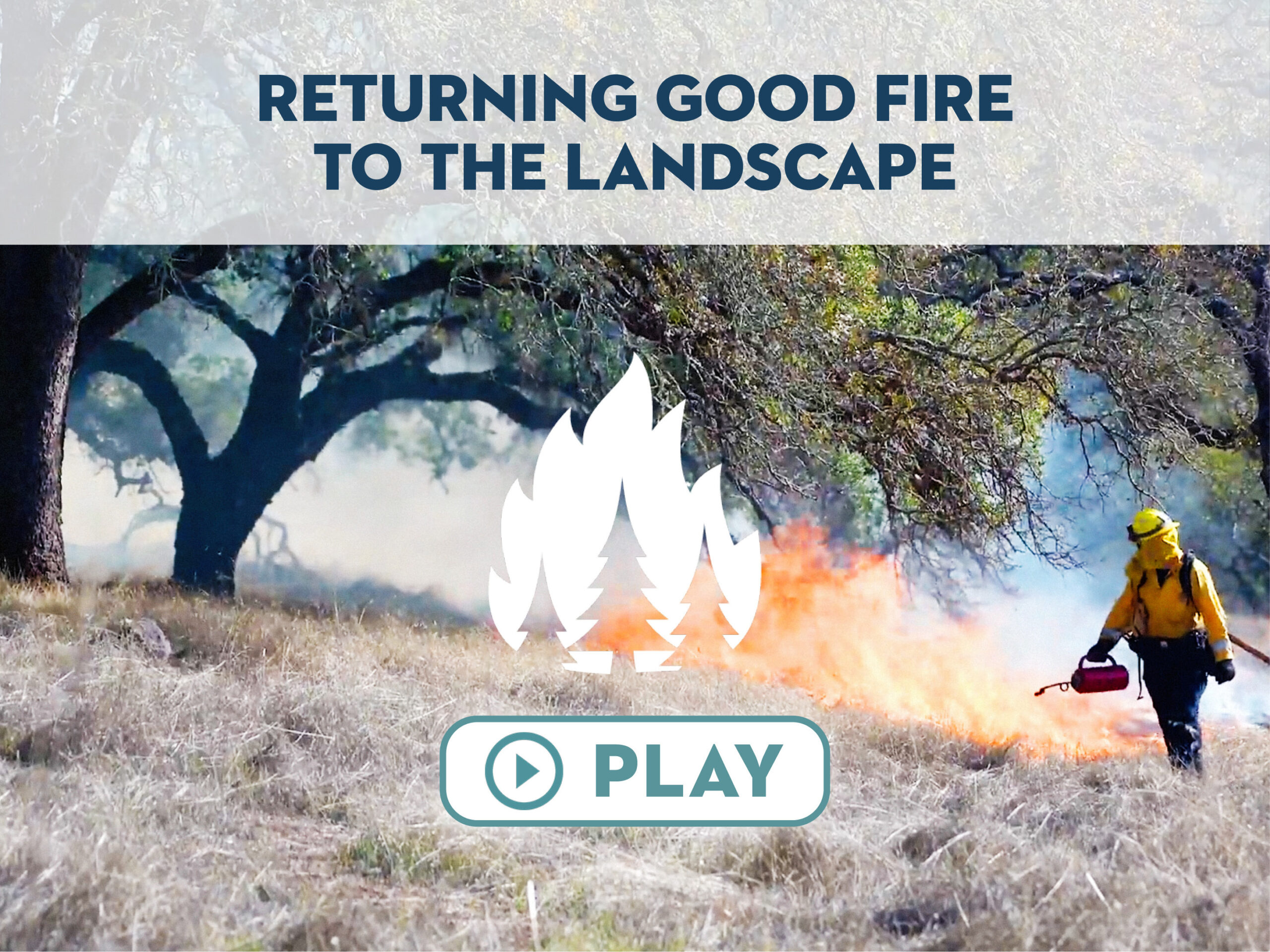
Good Fire is the core of our Living with Fire strategy, one of the six that governs our work. It’s an essential component to rejuvenating fire resilient ecosystems and recreating healthy and productive natural landscapes. Prescribed burns and vegetation management help reduce risks to life and property within the wildland-urban interface. Fire-adaptive land management can bring back healthier, more biodiverse, and wildfire-resilient landscapes. Learn more about this exciting aspect of our work in this video that was filmed on our preserves in 2022.
The Students of Fire – Learning to harness the power of fire for good.
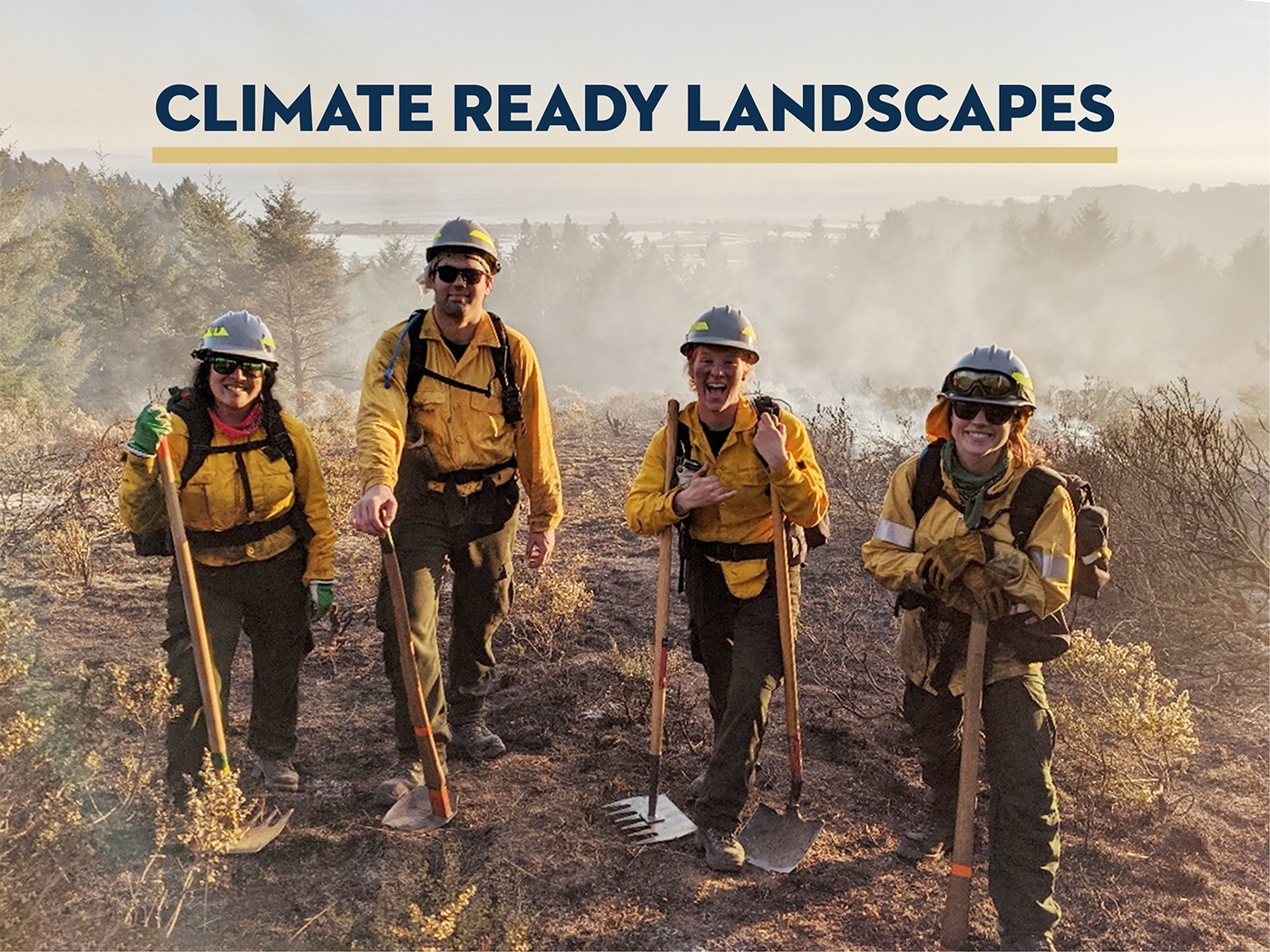
Good Fire Alliance crew members on a prescribed burn. (L to R) Alexis Bernal, Joe Plaugher, Annie Madden, and Jen Stanfield
Fire is a complex force of nature, a contradiction that brings danger and destruction, but also renewal and new growth. It’s as much a part of the natural world as wind, rain, or the sun rising in the morning. Like many in our county, wildfire became a much larger part of my life when it moved from the “other” (something that happens elsewhere) to the destruction in my community, among my friends and my neighbors.
Looking for an opportunity to help, in 2019 I discovered the Good Fire Alliance, our local Prescribed Burn Association. Hoping to turn prescribed burning from a hobby to part of my career, I later joined Sonoma Land Trust, where most of my time is devoted to coordinating the work of the Sonoma Valley Wildlands Collaborative (SVWC). The SVWC plans and implements ecologically-focused forest management and prescribed fire projects throughout the protected wildlands of Sonoma Valley. Last November I led the long-awaited first prescribed burn at our Glen Oaks Ranch Preserve, as a Burn Boss Trainee.
In the prescribed fire community, we often introduce ourselves as “students of fire”. This is a recognition that fire is a complex process, and constant learning and evolution is integral to the success of a project. With this in mind, the Nature Conservancy developed the Prescribed Fire Training Exchange (TREX) model, which brings a diverse set of fire practitioners together for an intensive series of trainings and cooperative, multi-agency burns, bringing together “all hands, on all lands”.
Locally, Fire Forward hosted the first North Bay TREX in 2020, and in 2022 they changed from the traditional two-week intensive to a series of weekends from November to January to allow a broad breadth of participants to join. With sponsorship and assistance from the SVWC, Fire Forward brought together the group of students, working land managers, and fire agency representatives, as well as trained community members interested in supporting the effort and getting their hands dirty.
One of the largest constraints to accomplishing large-scale forest restoration work is capacity and knowledge – the actual boots on the ground. The TREX model helps participants contribute to the implementation of prescribed burns and fuel reduction, and develop the skills and knowledge needed to plan and execute these projects. Since wildfire is now part of our lives, we need local knowledge and a skilled workforce to meet the needs of our landscapes and communities.
TREX project areas in Sonoma County weren’t limited to Sonoma Land Trust Preserves. Audubon Canyon Ranch’s Bouverie Preserve (SVWC Partner),Trione-Annadel State Park (SVWC Partner), and like-minded conservation groups such as Monan’s Rill, Pepperwood Preserve, and LandPaths all supported and benefited from the TREX.
Success can be tallied in a variety of ways — most often for my work it can be tallied by the number of acres treated and dollars-per-acre spent, calculated on spreadsheets and grant reports. It’s certainly impressive to see our $100,000 TREX investment translate into 166 acres of prescribed fire ($600 per acre), significantly less than the cost of mechanical thinning (thousands per acre) or fighting wildfires. Another, and my personal favorite, is to analyze the 272 burritos or 960 cups of coffee that fueled the crews. 1.6 burritos and 5.7 cups of coffee per acre seems like a bargain!
But the real measure of success is its impact on people. When you add up the 93 participants in the 2022 program who acquired skills, confidence, and experience with good fire, contributing 4,200 hours along the way, it’s clear that we made a large step toward reclaiming fire on our own terms, and I can’t wait to see where we are when the 5th or 10th Annual North Bay TREX rolls around.
As a land manager and part of Sonoma Land Trust’s Stewardship team, I am aware that so many of our actions and decisions are made for the long term, which means the results are often out in the distance, beyond our view. We plant trees for the next generation to experience, repair stream blockages hoping salmonids return, and manage habitat for wildlife that we will never observe. But with good fire, we can immediately witness the transformation of the landscape: the trees appear healthier, wildlife returns in numbers, and the grass grows back greener. It’s a beautiful thing to watch, and I am glad that we have such a dedicated community willing to contribute and support us in this work.
Joe Plaugher
Stewardship Project Manager, Student of Fire
Alumnos del Fuego
El fuego es una fuerza compleja de la naturaleza, una contradicción que conlleva peligro y destrucción, pero también renovación y nuevo crecimiento. Forma parte del mundo natural tanto como el viento, la lluvia o el amanecer de la mañana. Como para mucha gente en nuestra comunidad, los incendios forestales se convirtieron en una parte mucho más importante de mi vida cuando pasaron de ser “lo otro” (algo que ocurre en otro lugar) a la destrucción en mi propia comunidad, entre mis amigos y vecinos.
Buscando una oportunidad para ayudar, en 2019 descubrí la Alianza para el Buen Fuego, o Good Fire Alliance, nuestra asociación local de fuego controlado. Con la esperanza de convertir el fuego controlado de un pasatiempo a parte de mi carrera, luego me uní a Sonoma Land Trust, donde la mayor parte de mi tiempo se dedica a coordinar el trabajo del Colaborativo de Tierras Silvestres del Valle de Sonoma (Sonoma Valley Wildlands Collaborative, o SVWC). El SVWC planifica y lleva a cabo proyectos de gestión forestal y de incendios controlados centrados en la ecología en todas las zonas silvestres protegidas del Valle de Sonoma. El pasado noviembre dirigí el esperado primero fuego controlado en nuestra reserva del Rancho Glen Oaks, como Aprendiz de Jefe de Quema.
En la comunidad del fuego controlado, a menudo nos presentamos como “alumnos del fuego”. Con este nombre reconocemos que el fuego es un proceso complejo y que el aprendizaje y la evolución constantes son esenciales para el éxito de un proyecto. Con esto en mente, Nature Conservancy desarrolló el modelo de Intercambio de Formación para Fuegos Controlados (Prescribed Fire Training Exchange, o TREX), que reúne a un conjunto diverso de profesionales del fuego en una serie intensiva de cursos de formación y quemas cooperativas entre varios organismos, reuniendo a “todas las manos, en todas las tierras”.
A nivel local, Fire Forward organizó el primer TREX de la Bahía Norte en 2020, y en 2022 cambiaron el tradicional intensivo de dos semanas por una serie de fines de semana de noviembre a enero para permitir la participación de un amplio abanico de personas. Con el patrocinio y la ayuda del Colaborativo de Tierras Silvestres del Valle de Sonoma, Fire Forward reunió al grupo de alumnos, gestores de tierras en activo y representantes de agencias contra incendios, así como a miembros formados de la comunidad interesados en apoyar el esfuerzo e involucrarse.
Una de las mayores limitaciones a la hora de llevar a cabo trabajos de restauración forestal a gran escala es la capacidad y los conocimientos, es decir, el personal en el terreno. El modelo TREX ayuda a los participantes a contribuir a la realización de fuegos controlados y a la reducción del combustible, y a desarrollar las habilidades y los conocimientos necesarios para planificar y ejecutar estos proyectos. Dado que los incendios forestales ya forman parte de nuestra vida, tenemos que contar con conocimientos locales y mano de obra cualificada para satisfacer las necesidades de nuestros paisajes y comunidades.
Las zonas de proyectos TREX en el condado de Sonoma no se limitaron a las reservas del Sonoma Land Trust. La Reserva Bouverie de Audubon Canyon Ranch (socio del SVWC), el Parque Estatal Trione-Annadel (socio del SVWC), y grupos conservacionistas afines como Monan’s Rill, Reserva Pepperwood y LandPaths apoyaron y se beneficiaron del TREX.
El éxito puede medirse de varias maneras: en mi trabajo, lo más frecuente es medirlo por el número de acres tratadas y los dólares gastados por acre, calculados en hojas de cálculo e informes de subvenciones. Es impresionante ver que nuestra inversión de 100.000 dólares en TREX se traduce en 166 acres de fuego controlado (600 dólares por acre), mucho menos que el coste del clareo mecánico (miles de dólares por acre) o la lucha contra los incendios forestales. ¡Otra opción, y mi favorita, es analizar los 272 burritos o las 960 tazas de café que alimentaron a las cuadrillas! 1,6 burritos y 5,7 tazas de café por acre parecen una ganga.
Pero la verdadera medida del éxito es su impacto en la vida de la gente. Cuando se suman los 93 participantes en el programa de 2022 que adquirieron habilidades, confianza y experiencia con el buen fuego, contribuyendo con 4.200 horas a lo largo del camino, queda claro que hemos dado un gran paso hacia la recuperación del fuego en nuestros propios términos, y no puedo esperar a ver dónde estamos cuando llegue la 5ª o 10ª reunión anual de TREX de la Bahía Norte.
Como gestor de tierras y miembro del equipo de gestión y protección de Sonoma Land Trust, soy consciente de que muchas de nuestras acciones y decisiones se toman a largo plazo, lo que significa que los resultados están a menudo en la distancia, fuera de nuestra vista. Plantamos árboles para la próxima generación, reparamos obstrucciones de arroyos con la esperanza de que vuelvan los salmónidos y gestionamos hábitats para una fauna que nunca veremos. Pero con un buen fuego, podemos ser testigos inmediatos de la transformación del paisaje: los árboles parecen más sanos, la fauna regresa en número y la hierba vuelve a ser más verde. Es algo hermoso de ver, y me alegro de que tengamos una comunidad tan dedicada y dispuesta a contribuir y apoyarnos en este trabajo.
Joe Plaugher
Gestor de proyectos de gestión y protección, Alumno del Fuego
Oak Hill Farm
Oak Hill Farm’s Arden Bucklin-Sporer and Kate Bucklin are lighting the way for the next chapter of the family’s legacy.
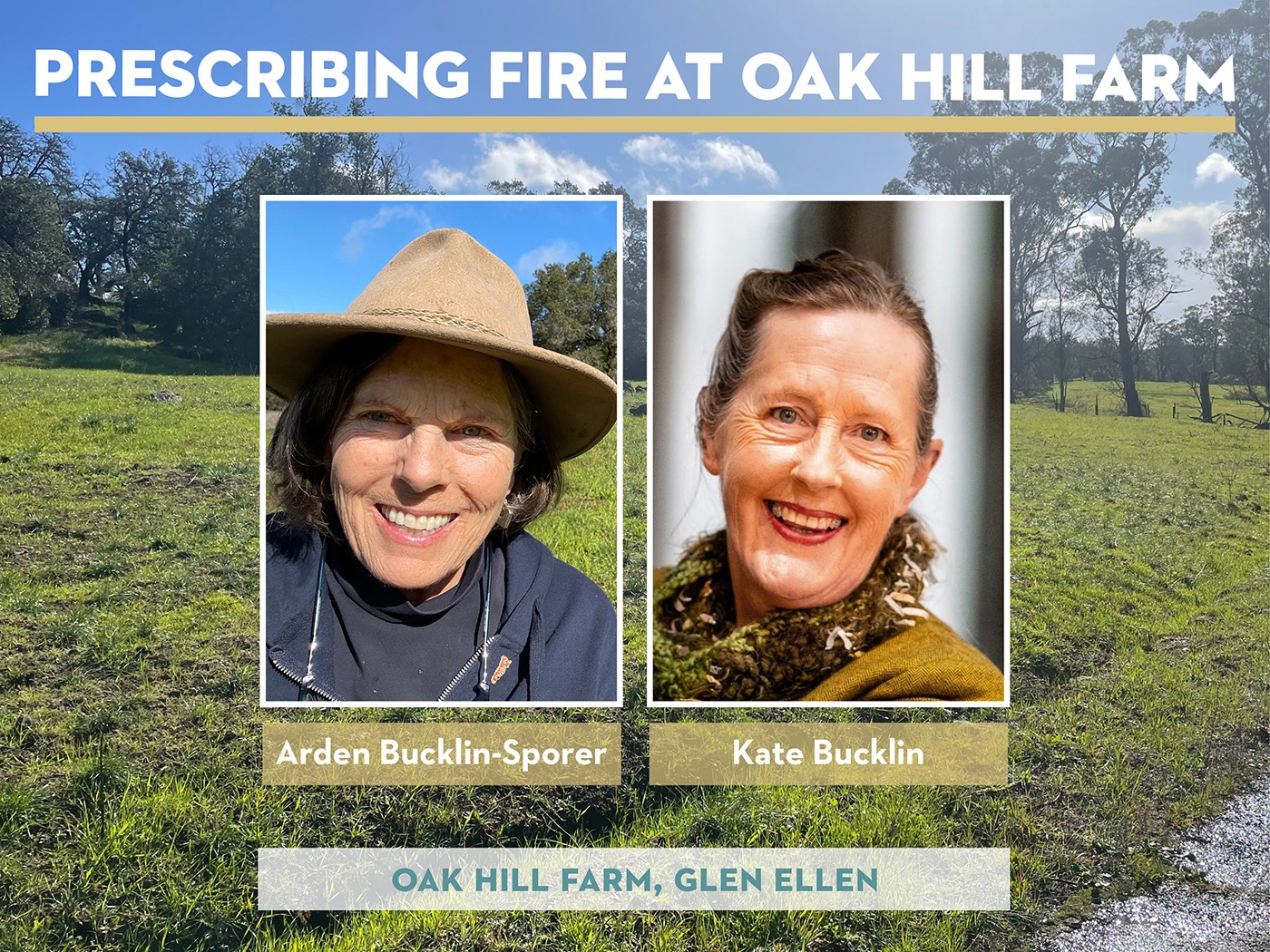
Over a half century has passed since Anne and Otto Teller began their sustainable farming practices at Oak Hill Farm in Glen Ellen, and today it is as vibrant and resilient as ever. The Tellers were among the founding members of Sonoma Land Trust, and they donated a conservation easement over their 677-acre property. As one of Sonoma Land Trust’s first conservation easements, this thriving organic farm and additional 500-acres of wild, undeveloped land are now protected forever. Kate and Arden, Anne Teller’s daughters, have continued implementing sustainability practices on the farm and have integrated fire-adaptive practices, intentionally returning good fire to the land for the first time in over a century.
In 2017, the Nuns Fire burned through most of the property, including portions of the farm and various buildings as well as undeveloped forests and shrublands outside the farmed area. These fires were a wake-up call and delivered an urgent message to the family, and our entire county, that could not be ignored. The fires came at a time when Anne Teller, then in her late 80s and battling cancer, had submitted a grant application to fund the clearing of woodland understory for 93 acres.
“My mother knew that someday fire would be an issue but there were never the resources to prepare for it and it remained on the backburner,” said Kate Bucklin. “She was recognized a long time ago for having cleared roughly 2 acres by hand when no one was doing this kind of work and she set an example of what good land stewardship practices could look like. She also understood the value in grazing and was an early adopter of using goats to keep down the weeds.”
The grant Anne applied for was through a Natural Resources Conservation Service (NRCS) program which offers financial assistance to farmers, ranchers, and landowners to manage or steward their lands, and provides personal assistance with the grant proposal process. For Arden and Kate, this was the exact support they needed to take the next step and to continue their mother’s devoted care of the property.
“At first NRCS seemed unapproachable, but they got on the phone and walked me through the whole thing,” Arden shared. “It seems to me that funding for this kind of work is left because landowners are often too busy and the process too complicated to navigate to complete the application. I appreciated that they were motivated to help us.”
The grant was awarded, and they brought in a crew to conduct the first phase of understory thinning. Hoping to expand their management options to include beneficial fire, Arden and Kate sprang into action, surveying and planning with Fire Forward, a program at Audubon Canyon Ranch, which also happens to be their neighbor. Guided by the team’s burn boss, Sasha Berleman, they assessed the property and broke it up into several regions, including the public-facing Red Barn section, and scheduled a burn over some 24 acres. Following a recent November rain, the prescribed fire crew started ignitions at the top of the hill and brought fire all the way down the hill without any issues.
“There are so many people doing this work now and a lot of resources out there for landowners who want to better protect their land from destructive wildfires,” said Arden.
Arden believes that “The goal is to have the healthiest forest you can have and build protection against the next fire.”
Fire was introduced around oak trees in areas with a thick layer of dead grass, or “thatch”, often referred to as “fuel” because it is dry and can easily take fire across the forest floor and into the tree canopy. By burning thatch, native plants have room to regenerate and offer protection to oaks by clearing the space around them.
“Since the thatch has been cleared, the native plants are coming back, allowing more variety of grasses and biodiversity,” said Kate. “I have noticed that the hawks are frequenting this area more — probably because the clearing improves the visibility of prey moving across the land.”
“We expect that in Spring we will discover seeds that have been dormant for 50 years have been brought to life by the fire’s heat. It is too early in the season to witness this transformation, but we know that this is another benefit fire brings to the land,” Arden added.
With the addition of the prescribed fire practices to manage, rebalance, and restore their grasslands and woodlands, they can also now turn their attention to the task of removing hundreds of acres of burnt trees left standing after the wildfires. In addition, they are exploring the benefits of animal grazing to keep the thatch and weeds in check until the next prescribed fire is scheduled.
“If multiple landowners in one area can work together, they can benefit from the resources and possibly apply for a larger landscape grant for this work,” Kate suggested.
Oak Hill Farm, Sonoma Land Trust’s Glen Oaks Ranch and Secret Pasture Preserve, and Audubon Canyon Ranch’s Bouverie Preserve form a protected core of more than 1,500 acres of connected open space in Sonoma Valley near Glen Ellen. For decades, we have worked on shared priorities across property lines, including watershed health and wildlife passage, and in recent years, have expanded our focus towards fire resiliency on a larger scale.
“There are a lot of great scientists in Sonoma County and a lot of people are active in this work. I am happy to be a resource for any landowner who needs some assistance with this process and encourage them to reach out to me for help,” Arden offered.
Sonoma Land Trust is a valued partner in this work and is one of the six organizations that make up the Sonoma Valley Wildlands Collaborative, working with CalFire on landscape-scale forest management and prescribed fire projects throughout Sonoma Valley.
Oak Hill Farm is protected through a conservation easement held by Sonoma Land Trust, ensuring it will remain conserved forever.
To learn more about Conservation Easements or our Living with Fire strategic plan, email us at info@sonomalandtrust.org
We are incredibly grateful to the entire Bucklin/Teller family and their spouses for their support over multiple generations, which continues to sustain the work we do across the county. We are lucky to have them as part of our Sonoma Land Trust community.
Last Month’s Language of the Land Webinar
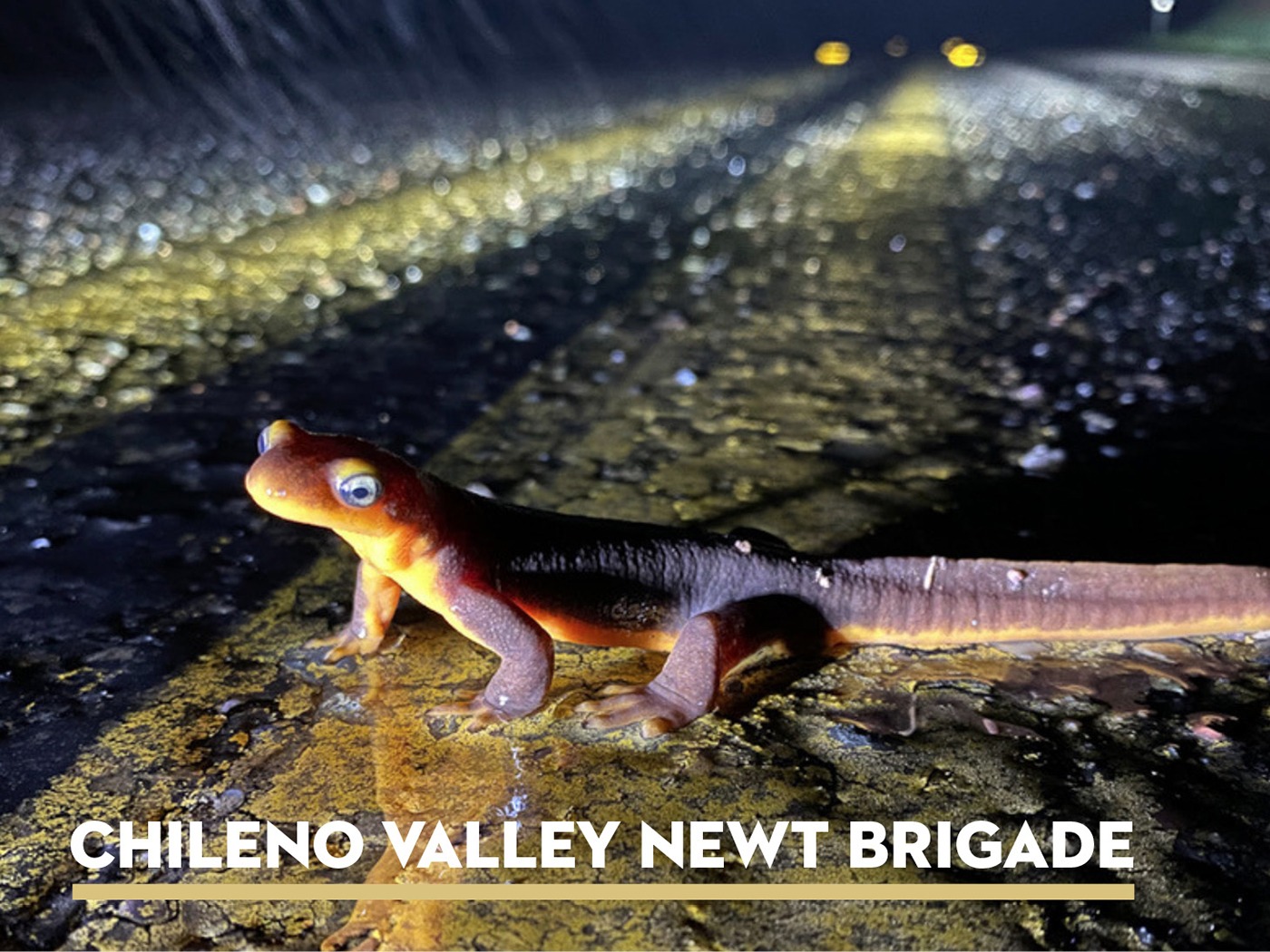
Join Sally Gale of the Chileno Valley Newt Brigade to learn about this local volunteer group that is dedicated to helping the California Newts safely reach their breeding grounds. Volunteers spend nights in two-hour shifts watching for and helping the newts cross the road so they can complete their journey to Laguna Lake and back.
Free Webinar
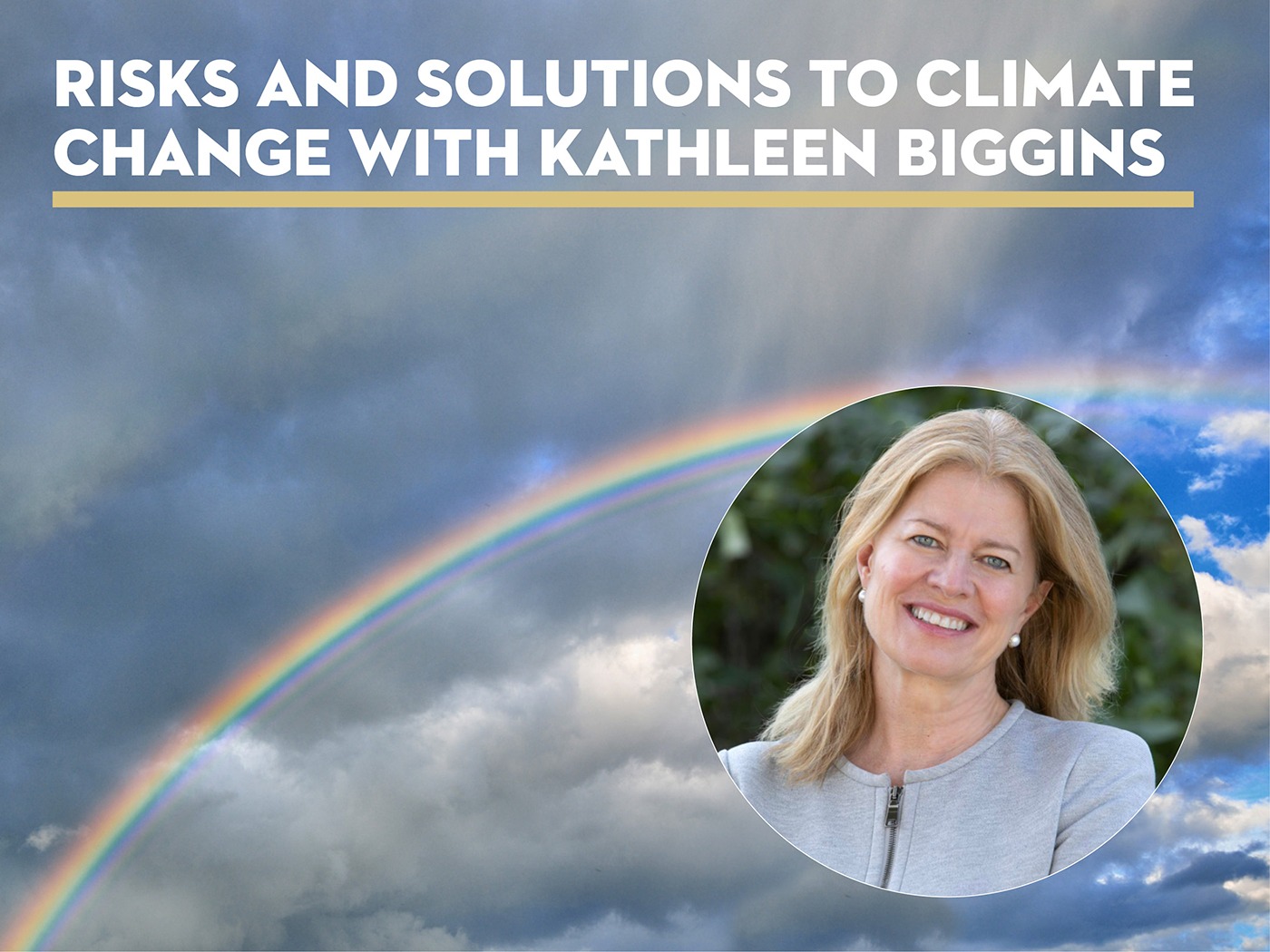
Language of the Land: Risks and Solutions to Climate Change
Thursday, March 16, 6pm
Join Sonoma Land Trust and guest speaker Kathleen Biggins of C-Change Conversations to learn the latest info about climate change, its impacts, and what can be done about it. The C-Change Primer, a non-partisan, science-based, 360-degree view, provides a deep dive into the risks and potential solutions of this complex issue. Well received throughout the country by a wide range of audiences, this presentation helps people understand how climate change impacts them personally and why they should care. We will also look at how climate change is affecting our area and how Sonoma Land Trust is responding in its work.
Free Public Hikes in Partnership with Sonoma County Ag + Open Space
Sears Point Marsh Walk
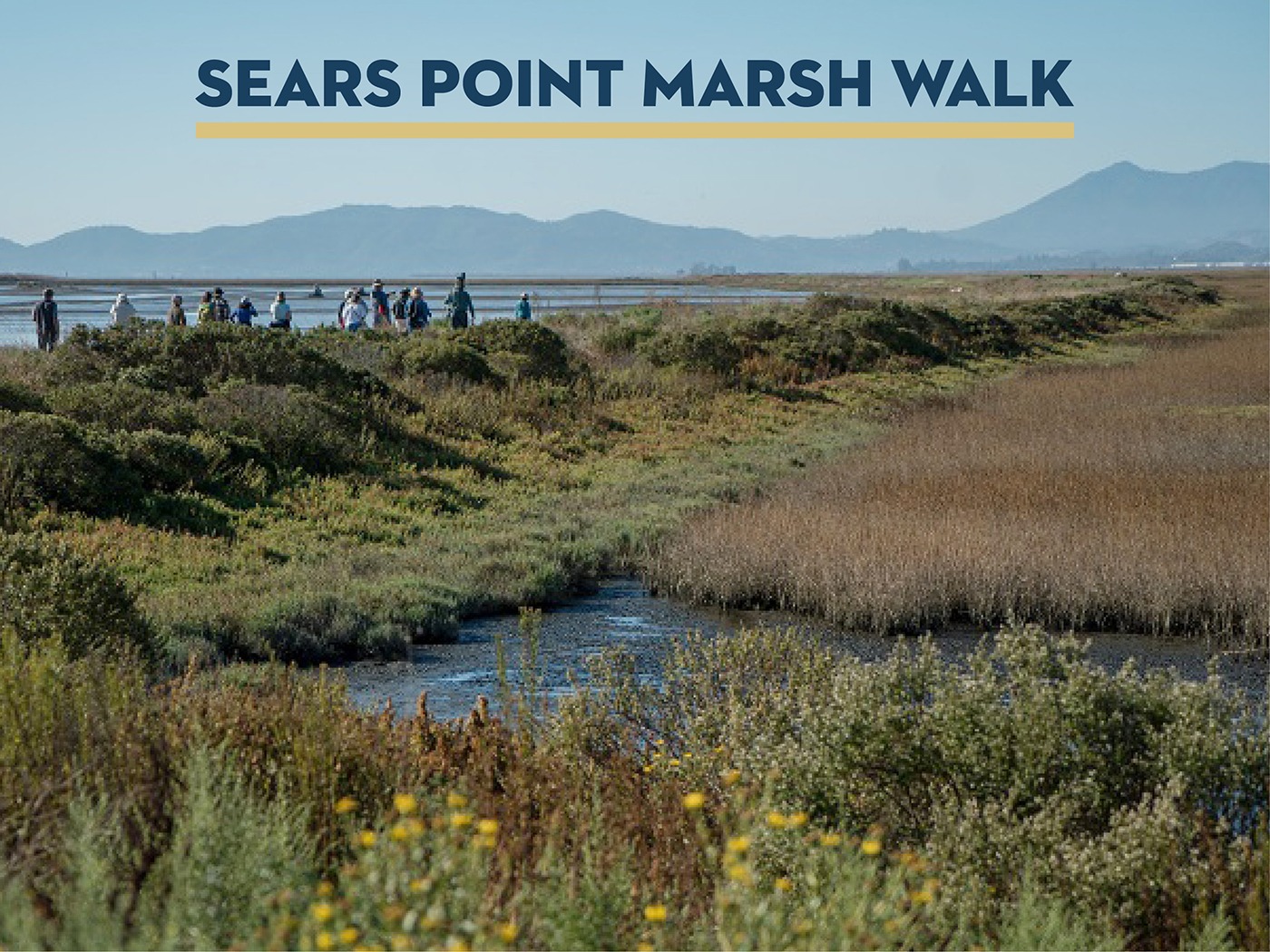
Sunday, March 5, 2023, 10am–12:30pm
Winter is a great time to see the birds on the San Pablo Bay. Join us for a leisurely walk on the Dickson Trail at the San Pablo Bay National Wildlife Refuge. We’ll observe the current tidal marsh restoration area at the former Dickson Ranch in comparison to the older tidal marsh restoration at the Sonoma Baylands as we walk along the levee trail that separates them.
Level: Gentle
Glen Oaks Ranch Walk
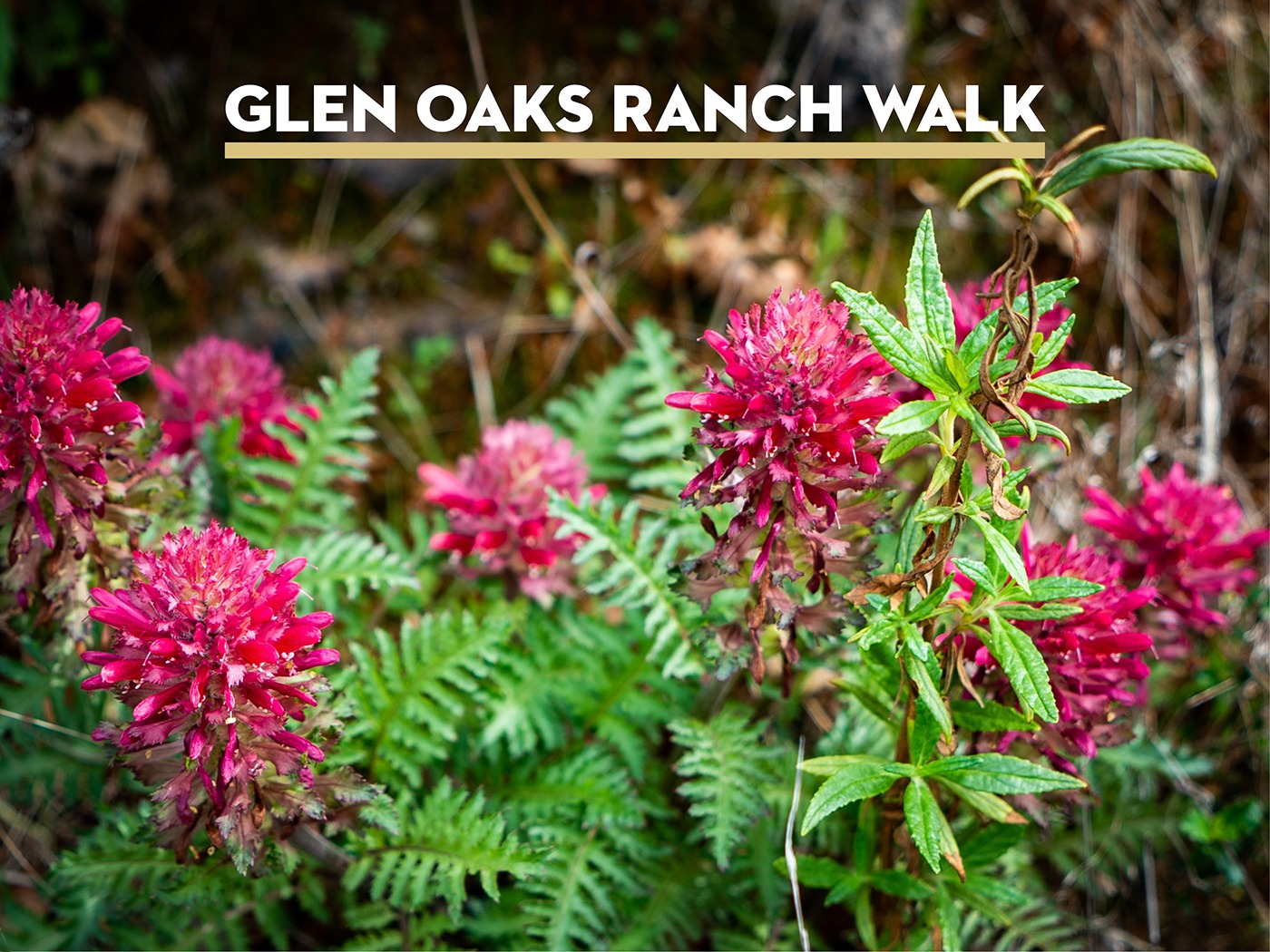
Sunday, March 19, 2023, 10am–2pm
Join Sonoma Land Trust and Ag + Open Space for a hike at Glen Oaks Ranch — an historic ranch located in Sonoma Valley near Glen Ellen. We’ll take a look at some of the early blooming wildflowers, observe the regrowth post-2017 fires, and walk through an area that had a prescribed burn in the fall.
This 234-acre preserve was donated to Sonoma Land Trust in 2001. Sonoma County Ag + Open Space holds a conservation easement on this land, which designates three conservation zones — historic, agriculture and forever wild. This hike is approximately 3 miles with a 300-foot elevation gain.
Level: Moderate
There is no charge for these events, which are made possible by the voters of Sonoma County who fund the work of Ag + Open Space with a quarter-cent sales tax.
Additional Free Public Hikes
Spring Wildflowers in the foothills of Cougar Mountain
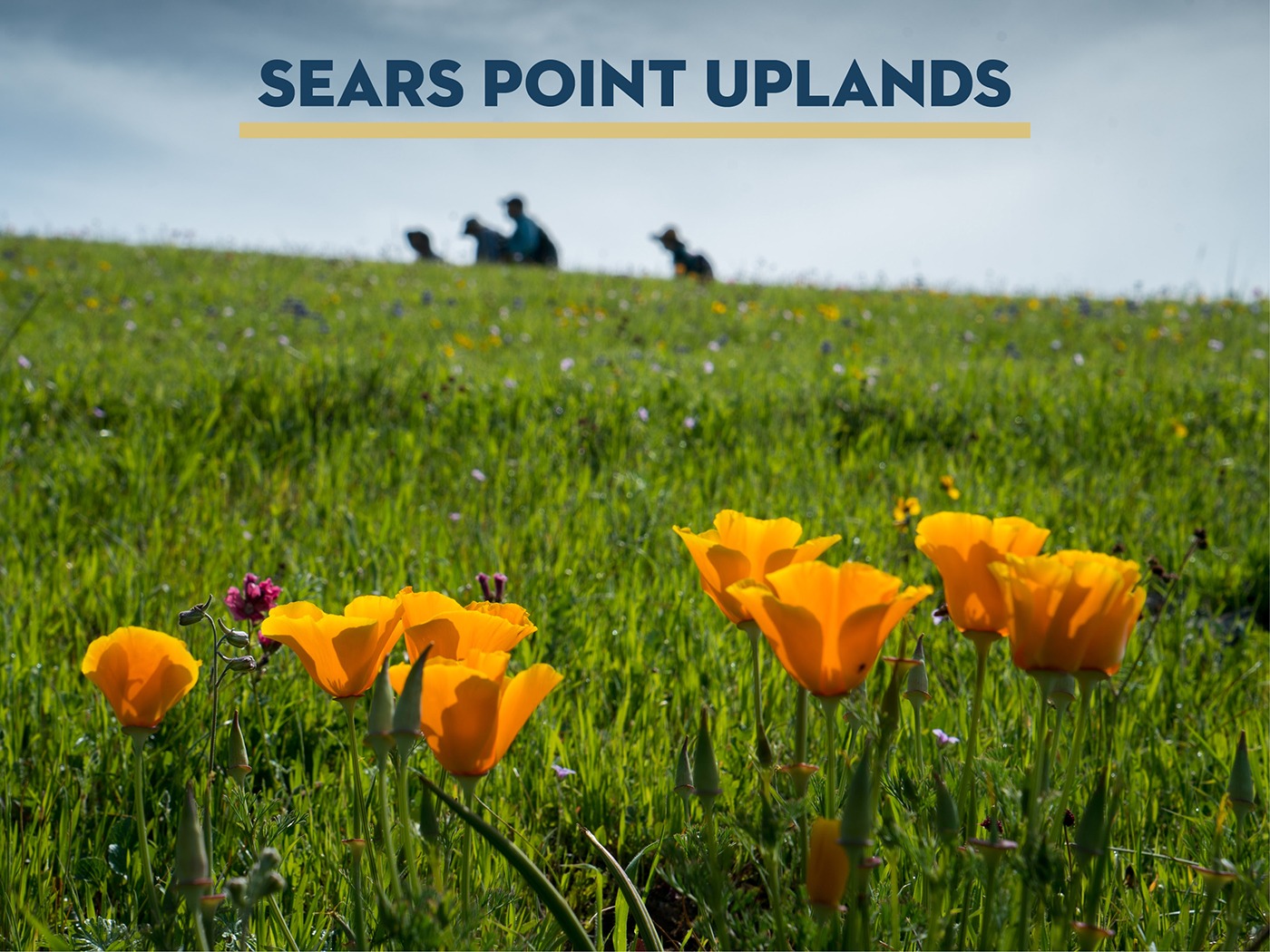
Saturday, March 18, 10am–1pm
Springtime in the Sears Point uplands brings a display of yellow violets, pink checkerbloom, blue lupines, and many other wildflowers. Join us for a walk across the foothills of Cougar Mountain to see these wildflower meadows up close while enjoying the vistas across San Pablo Bay.
This leisurely walk is about 1 mile with about 200 feet in elevation gain, across grasslands grazed by cattle.
Level: Moderate
Familias al Aire Libre: Wildflowers at Sears Point
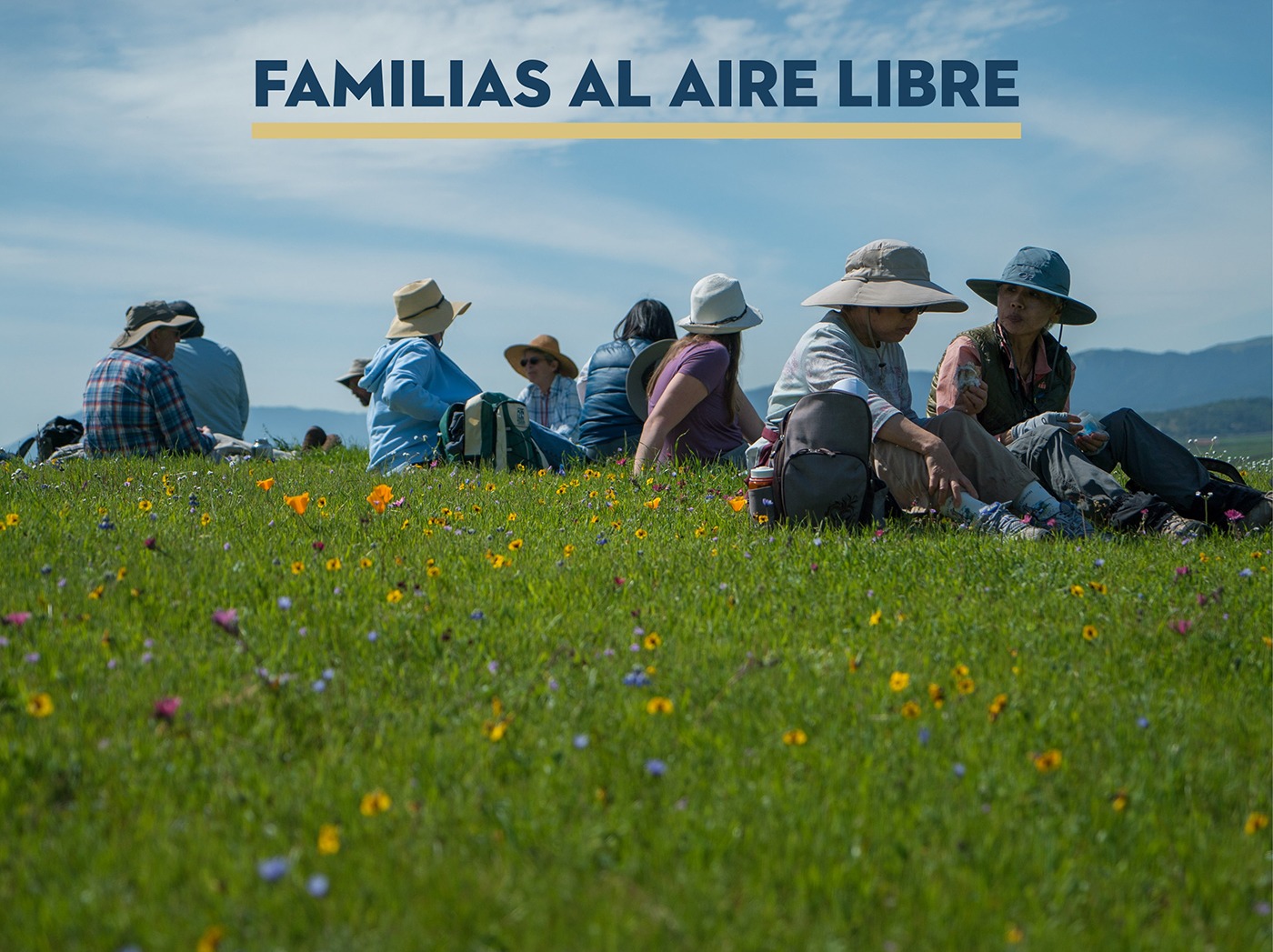
Sunday, March 26, 1pm–5pm
Springtime in the Sears Point uplands brings a display of yellow violets, pink checkerbloom, blue lupines, and many other wildflowers. Bring your family and join Tania Delgado, Bilingual Outings Guide for Sonoma Land Trust, for a Spanish-led walk across the foothills of Cougar Mountain to see these wildflower meadows up close while enjoying the vistas across San Pablo Bay. This leisurely walk is about 1 mile with about 200 feet in elevation gain, across grasslands grazed by cattle.
